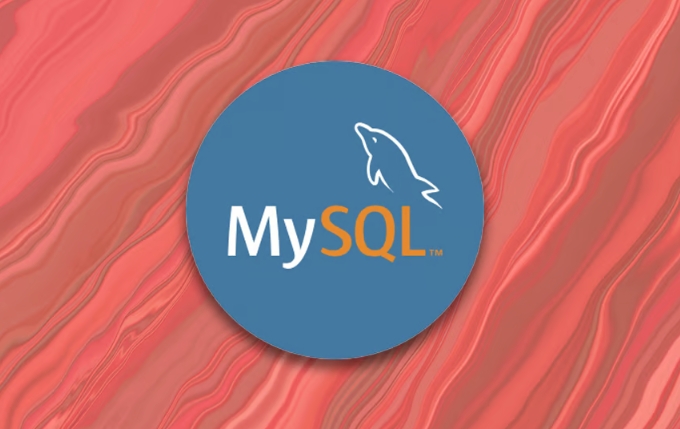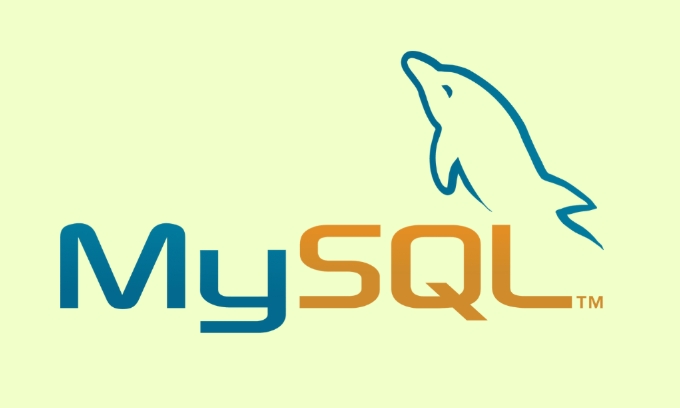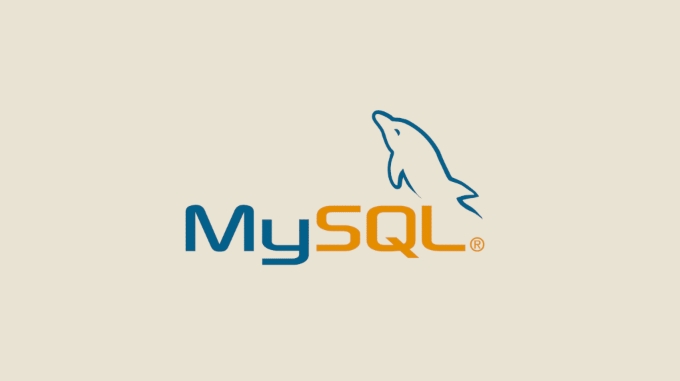To use PHP for MySQL web development, you must first master the connection to the database, perform query and data operations. 1. It is recommended to use mysqli extension to connect to the database. Create a connection through new mysqli() and check whether it is successful; 2. Use query() method to execute SQL queries, combine fetch_assoc() to traverse the result set, and pay attention to prevent preprocessing statements from being used to prevent SQL injection; 3. When inserting or updating data, use prepare() and bind_param() to bind parameters to ensure safe transmission of values; 4. Common errors include connection failure, query results, insertion conflicts, etc. You can troubleshoot problems by checking configuration, field names, constraint restrictions and opening error prompts. Mastering these basic operations can meet most PHP MySQL development needs.

If you plan to use PHP for web development, you can't avoid MySQL. PHP and MySQL are very common, and frameworks such as WordPress and Laravel are based on their combination. But when you first start learning, you may feel a little confused about connecting to the database and operating data. Don't worry, I will take you step by step to clarify how to use MySQL in PHP.

How to connect to a MySQL database?
If you want to operate the database, the first step is to connect it. PHP provides a variety of ways to connect MySQL, the most commonly used are mysqli and PDO . mysqli is recommended here because it is designed for MySQL and has simple syntax.

The basic writing method is as follows:
$host = 'localhost';
$user = 'root';
$pass = '';
$dbname = 'test_db';
$conn = new mysqli($host, $user, $pass, $dbname);
if ($conn->connect_error) {
die("Connection failed:" . $conn->connect_error);
}Pay attention to a few points:

- The host name is usually localhost;
- The user name and password must be filled in according to your own database configuration;
- If the connection is not up, first check whether the database is started, and then confirm whether the account password is correct.
How to execute SQL query?
After the connection is successful, the query statement can be executed. For example, if you want to get all user information from a table called users , you can write it like this:
$sql = "SELECT id, name, email FROM users";
$result = $conn->query($sql);
if ($result->num_rows > 0) {
while($row = $result->fetch_assoc()) {
echo "ID: " . $row['id'] . " - Name: " . $row['name'] . "<br>";
}
} else {
echo "no result";
}This example does a few things:
- Write a SELECT query;
- After execution, determine whether there is a return result;
- If so, output data one by one;
- If there is no, it means "no result".
Note: SQL injection is a security risk. If the content input by the user is directly spliced ??into SQL, it is easy to be attacked. At this time, prepared statements should be used, such as
mysqli_prepare()or PDO's binding parameter function.
What should you pay attention to when inserting and updating data?
In addition to checking data, we often have to insert new records or modify existing records. For example, register a new user:
$stmt = $conn->prepare("INSERT INTO users (name, email) VALUES (?, ?)");
$stmt->bind_param("ss", $name, $email);
$name = "Zhang San";
$email = "zhangsan@example.com";
$stmt->execute();
echo "New user added successfully";
$stmt->close();Preprocessing statements are used here, which is beneficial to prevent SQL injection and facilitate parameter transmission. If you update the data, the structure is similar, but SQL is changed to UPDATE:
UPDATE users SET email = ? WHERE id = ?
Then remember to bind the parameter order to make sure the variable types match.
Common errors and troubleshooting suggestions
When you first get started, you can easily encounter some problems. for example:
- The database connection cannot be made: check whether the user name, password, and database exist;
- The query has no result, but there is clearly: it may be that the field name is written incorrectly, or the conditions are not met;
- Failed to insert data: see if there is a limit on the field length, or whether a unique constraint conflict is set;
- The page is blank and there is no error: Open PHP error message and add
display_errors=Onto php.ini.
In addition, it is recommended to use var_dump() or print_r() to view the variable content, which is helpful for debugging.
Basically that's it. MySQL is very basic in PHP projects. By mastering the actions of connection, query, addition, deletion and modification, you can meet most needs. It may be a bit confusing at the beginning, but it will be much easier to practice a few more times.
The above is the detailed content of mysql tutorial for PHP web development. For more information, please follow other related articles on the PHP Chinese website!

Hot AI Tools

Undress AI Tool
Undress images for free

Undresser.AI Undress
AI-powered app for creating realistic nude photos

AI Clothes Remover
Online AI tool for removing clothes from photos.

Clothoff.io
AI clothes remover

Video Face Swap
Swap faces in any video effortlessly with our completely free AI face swap tool!

Hot Article

Hot Tools

Notepad++7.3.1
Easy-to-use and free code editor

SublimeText3 Chinese version
Chinese version, very easy to use

Zend Studio 13.0.1
Powerful PHP integrated development environment

Dreamweaver CS6
Visual web development tools

SublimeText3 Mac version
God-level code editing software (SublimeText3)
 Connecting to MySQL Database Using the Command Line Client
Jul 07, 2025 am 01:50 AM
Connecting to MySQL Database Using the Command Line Client
Jul 07, 2025 am 01:50 AM
The most direct way to connect to MySQL database is to use the command line client. First enter the mysql-u username -p and enter the password correctly to enter the interactive interface; if you connect to the remote database, you need to add the -h parameter to specify the host address. Secondly, you can directly switch to a specific database or execute SQL files when logging in, such as mysql-u username-p database name or mysql-u username-p database name
 Handling character sets and collations issues in MySQL
Jul 08, 2025 am 02:51 AM
Handling character sets and collations issues in MySQL
Jul 08, 2025 am 02:51 AM
Character set and sorting rules issues are common when cross-platform migration or multi-person development, resulting in garbled code or inconsistent query. There are three core solutions: First, check and unify the character set of database, table, and fields to utf8mb4, view through SHOWCREATEDATABASE/TABLE, and modify it with ALTER statement; second, specify the utf8mb4 character set when the client connects, and set it in connection parameters or execute SETNAMES; third, select the sorting rules reasonably, and recommend using utf8mb4_unicode_ci to ensure the accuracy of comparison and sorting, and specify or modify it through ALTER when building the library and table.
 Implementing Transactions and Understanding ACID Properties in MySQL
Jul 08, 2025 am 02:50 AM
Implementing Transactions and Understanding ACID Properties in MySQL
Jul 08, 2025 am 02:50 AM
MySQL supports transaction processing, and uses the InnoDB storage engine to ensure data consistency and integrity. 1. Transactions are a set of SQL operations, either all succeed or all fail to roll back; 2. ACID attributes include atomicity, consistency, isolation and persistence; 3. The statements that manually control transactions are STARTTRANSACTION, COMMIT and ROLLBACK; 4. The four isolation levels include read not committed, read submitted, repeatable read and serialization; 5. Use transactions correctly to avoid long-term operation, turn off automatic commits, and reasonably handle locks and exceptions. Through these mechanisms, MySQL can achieve high reliability and concurrent control.
 Managing Character Sets and Collations in MySQL
Jul 07, 2025 am 01:41 AM
Managing Character Sets and Collations in MySQL
Jul 07, 2025 am 01:41 AM
The setting of character sets and collation rules in MySQL is crucial, affecting data storage, query efficiency and consistency. First, the character set determines the storable character range, such as utf8mb4 supports Chinese and emojis; the sorting rules control the character comparison method, such as utf8mb4_unicode_ci is case-sensitive, and utf8mb4_bin is binary comparison. Secondly, the character set can be set at multiple levels of server, database, table, and column. It is recommended to use utf8mb4 and utf8mb4_unicode_ci in a unified manner to avoid conflicts. Furthermore, the garbled code problem is often caused by inconsistent character sets of connections, storage or program terminals, and needs to be checked layer by layer and set uniformly. In addition, character sets should be specified when exporting and importing to prevent conversion errors
 Using Common Table Expressions (CTEs) in MySQL 8
Jul 12, 2025 am 02:23 AM
Using Common Table Expressions (CTEs) in MySQL 8
Jul 12, 2025 am 02:23 AM
CTEs are a feature introduced by MySQL8.0 to improve the readability and maintenance of complex queries. 1. CTE is a temporary result set, which is only valid in the current query, has a clear structure, and supports duplicate references; 2. Compared with subqueries, CTE is more readable, reusable and supports recursion; 3. Recursive CTE can process hierarchical data, such as organizational structure, which needs to include initial query and recursion parts; 4. Use suggestions include avoiding abuse, naming specifications, paying attention to performance and debugging methods.
 Strategies for MySQL Query Performance Optimization
Jul 13, 2025 am 01:45 AM
Strategies for MySQL Query Performance Optimization
Jul 13, 2025 am 01:45 AM
MySQL query performance optimization needs to start from the core points, including rational use of indexes, optimization of SQL statements, table structure design and partitioning strategies, and utilization of cache and monitoring tools. 1. Use indexes reasonably: Create indexes on commonly used query fields, avoid full table scanning, pay attention to the combined index order, do not add indexes in low selective fields, and avoid redundant indexes. 2. Optimize SQL queries: Avoid SELECT*, do not use functions in WHERE, reduce subquery nesting, and optimize paging query methods. 3. Table structure design and partitioning: select paradigm or anti-paradigm according to read and write scenarios, select appropriate field types, clean data regularly, and consider horizontal tables to divide tables or partition by time. 4. Utilize cache and monitoring: Use Redis cache to reduce database pressure and enable slow query
 Designing a Robust MySQL Database Backup Strategy
Jul 08, 2025 am 02:45 AM
Designing a Robust MySQL Database Backup Strategy
Jul 08, 2025 am 02:45 AM
To design a reliable MySQL backup solution, 1. First, clarify RTO and RPO indicators, and determine the backup frequency and method based on the acceptable downtime and data loss range of the business; 2. Adopt a hybrid backup strategy, combining logical backup (such as mysqldump), physical backup (such as PerconaXtraBackup) and binary log (binlog), to achieve rapid recovery and minimum data loss; 3. Test the recovery process regularly to ensure the effectiveness of the backup and be familiar with the recovery operations; 4. Pay attention to storage security, including off-site storage, encryption protection, version retention policy and backup task monitoring.
 Optimizing complex JOIN operations in MySQL
Jul 09, 2025 am 01:26 AM
Optimizing complex JOIN operations in MySQL
Jul 09, 2025 am 01:26 AM
TooptimizecomplexJOINoperationsinMySQL,followfourkeysteps:1)EnsureproperindexingonbothsidesofJOINcolumns,especiallyusingcompositeindexesformulti-columnjoinsandavoidinglargeVARCHARindexes;2)ReducedataearlybyfilteringwithWHEREclausesandlimitingselected






